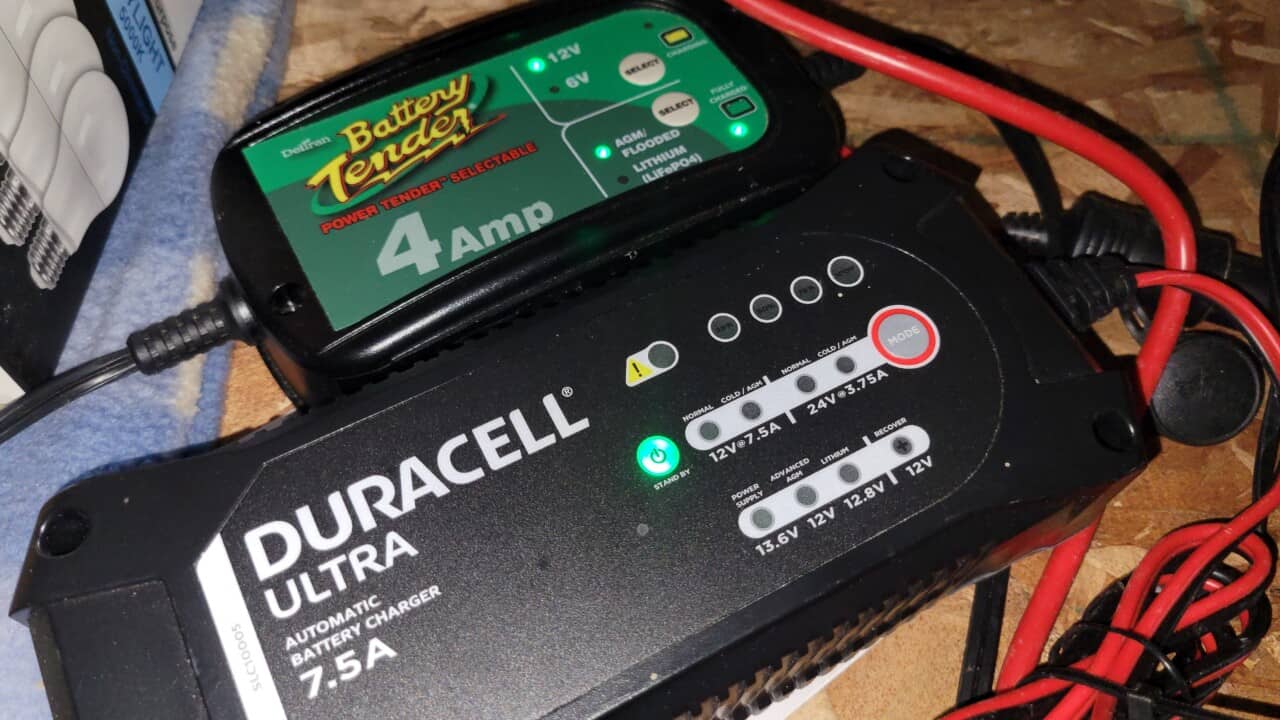Listen to the article below by hitting the play button below and feel free to scroll the page for any helpful visuals. All of the articles on this website will have this audio feature for your convenience.
How Many Amps is a 12-Volt Car Battery?
Car batteries, which are designed to release high amperage to start your vehicle’s engine, are rated in CCA (cold cranking amps) and CA (cranking amps). These are essentially the amps that can be released by the battery in 30 seconds in 32°F and 0°F, respectively.
A car battery will generally have between 500 and 760 cold cranking amps or about 625 to 950 cranking amps. These ranges will generally be adequate enough to handle smaller passenger cars to large trucks.
How Many Amps Should a Car Battery Have?
When I looked at the top 25 most popular vehicles being sold in the USA in 2021 (excluding electric vehicles), the most popular battery group sizes (physical dimensions) were 24F, 35, 48/H6, 65, H5, 51R, H7, and H4. These vehicles included small cars and large trucks. The top 3 most popular battery sizes were 35, 48/H6, and H7.
Since CCA and CA ratings are extremely difficult to find with every make and model vehicle, I decided to shop around for those battery group sizes and get an average for the CCA and CA ratings. This average should be pretty representative of what modern vehicles are requiring for starting amps. I took several brands into account for each battery group size.
| Most Popular Car Battery Group Sizes | Amp Ranges (Cold Cranking Amps) |
|---|---|
| 24F | 585-750 |
| 35* | 490-550 |
| 48/H6* | 615-760 |
| 65 | 650-850 |
| H5 | 650-680 |
| 51R | 450-500 |
| H7* | 800-850 |
| H4 | 480 |
How to Convert Cold Cranking Amps (CCA) to Cranking Amps (CA) and Vice Versa
An excellent ballpark method of converting cold cranking amps (CCA) to cranking amps (CA) is to simply divide the CCA number by 0.8.
Conversely, to convert cranking amps to cold cranking amps, you simply take the cranking amps number and multiply it by 0.8.
Take a peek at any battery search on Google and you’ll see that this math holds up.

How Many Amp-Hours (Ah) Does a Car Battery Have?
In general, a car battery will have 50-80 amp-hours (Ah) for the most common battery types that are sold.
When I went through the most common batteries used in vehicles today in the sections above, and I sifted through dozens of batteries, the 50-80 Ah range encompassed nearly all of the batteries that were there.
It’s not the most common thing to find the Ah rating on a car battery since they are starter batteries and not intended for deep-cycle applications. Since most people just want to know how many amps will be available to start the car in the winter (cold cranking amps), they are less concerned with how long a car battery can power a small flat screen TV (amp hours).
You’ll generally find CCA, CA, or RC (reserve capacity) numbers on a car battery. The reserve capacity is how long a car can power a 25-amp load until the battery is dead (an indicator of how long you could drive if your alternator failed).
How Many Amps is a Car Battery Charger?
Since most car batteries will have a 50-80 amp hour equivalency, it is best practice to keep charging amps at 10% or less of the battery’s total Ah (ampere hour) rating.
With that being said, the ideal charging amps for most car batteries will fall between 5-8 amps. Using a 4 amp charger will certainly be fine, and a 10 amp charger will likely be fine as well, depending on your battery’s size.
You should use caution when using a battery charger that is higher than 10-amps when charging most car batteries.

Remember, the battery is trying to convert electrical energy into stored chemical energy and it can only do that at a certain rate depending on the current state of charge of the battery. If the charging amps are more than the battery can convert, then the battery will overheat, overcharge, and off-gas as the electrolyte is boiled out of the battery.
If you’re looking for a solid charger that is a “set it and forget it” option, then Deltran makes a great 4-amp charger (Amazon). I’ve been using this one for 8 years now without fail or issue. It’s a gentle charge but still powerful enough to charge nearly all batteries overnight.
